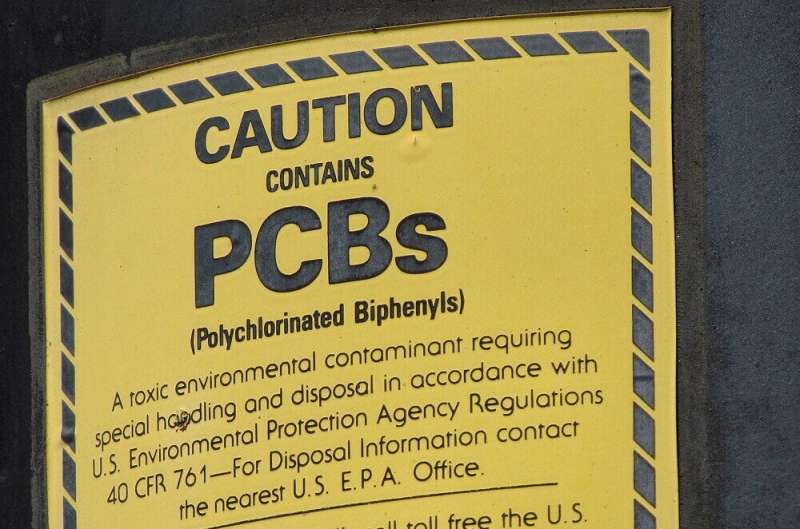March 22, 2024 report
This article has been reviewed according to Science X's editorial process and policies. Editors have highlighted the following attributes while ensuring the content's credibility:
fact-checked
peer-reviewed publication
trusted source
proofread
Unintentional generation of PCBs may be producing more of the chemicals than before ban

A trio of researchers at Chemistry Matters Inc., in Canada, has found evidence suggesting that more polychlorinated biphenyls (PCBs) are being generated today than before they were banned.
In their study, published in the journal Science of the Total Environment, David Megson, Ifeoluwa Grace Idowu and Courtney Sandau reviewed the process used to make several products known to generate PCBs as byproducts to determine the amount generated; they used this data to calculate the estimated annual production rate of unintentional PCBs for the United States.
In the 1980s, PCBs in manufactured products were banned around the world after researchers discovered that the chemicals could make their way into the environment, causing major health problems for animals and humans. But many products are produced via chemical reactions that result in the creation of PCBs as byproducts, which are not being monitored. Because of that, the research team undertook a limited study to make estimates of their own.
To find out which products lead to PCB byproducts and in what amounts, the researchers searched the PubChem database and found 69 such instances. They then looked at the amounts of each product created in the U.S. for the year 2019 and used that to calculate how much byproduct PCB would be produced by all of them.
It came to approximately 43,000 metric tons, more than the 39,000 metric tons produced directly in 1970, the highest known amount per year before the ban.
The research team acknowledges that their estimate is rough and that the real amount could be more, or possibly less, than they calculated. But their main point remains—huge amounts of PCBs are still generated around the world and nobody is monitoring them. It is not known, for example, what is done with them, or if they are being introduced into the environment.
They suggest more work is required to pinpoint which products result in the creation of unintentional PCBs and then to either ban them or regulate them.
More information: David Megson et al, Is current generation of polychlorinated biphenyls exceeding peak production of the 1970s?, Science of The Total Environment (2024). DOI: 10.1016/j.scitotenv.2024.171436
Journal information: Science of the Total Environment
© 2024 Science X Network





















